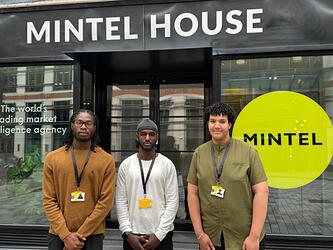BE Bites: using ‘BE Scaffolding’ to improve communications
The first stage of the process is to ‘add the scaffolding’ – to annotate the original letter with ideas and suggestions for improvement based on behavioural science concepts. We then remove the ‘scaffolding’ to reveal a new BE-inspired improved letter which the client can test against the original.
The US Social and Behavioral Sciences Team (SBST) use a similar approach for this process. The SBST partnered with the US Department of Defense to help develop a better communications plan to ensure nearly 140,000 Servicemembers re-enrolled in their retirement savings plan (called Roth Thrift Savings Plan or TSP).
The SBST redesigned the email asking Servicemembers to re-enrol using several different behavioural insights, such as:
- loss aversion (of losing out on making contributions)
- chunking the action steps and
- building cognitive ease through plain language.
The image below is an example of its annotations on the revised email. Note that the superscript numbers refer to the relevant academic paper, making its insights very clearly evidence- or theory-based. For example, 1: Loss aversion, references the well known 1995 paper on Prospect Theory by Daniel Kahneman and Amos Tversky.
In January 2015, Servicemembers were either sent the original email (control group) or the redesigned email shown above. The redesigned email resulted in higher re-enrolment rates in the first week after emails were sent:
- 28.7% of Servicemembers re-enrolled after receiving the redesigned email.
- 23.5% of Servicemembers re-enrolled after receiving the original email.
This translates to a 22% increase in enrolments – for very little investment.
BE concepts not only help you understand what might be reducing the impact of your communication, but also inspire ways to leverage key cognitive biases that will subconsciously nudge people in the right direction.
Crawford Hollingworth is founder of The Behavioural Architects

We hope you enjoyed this article.
Research Live is published by MRS.
The Market Research Society (MRS) exists to promote and protect the research sector, showcasing how research delivers impact for businesses and government.
Members of MRS enjoy many benefits including tailoured policy guidance, discounts on training and conferences, and access to member-only content.
For example, there's an archive of winning case studies from over a decade of MRS Awards.
Find out more about the benefits of joining MRS here.












0 Comments